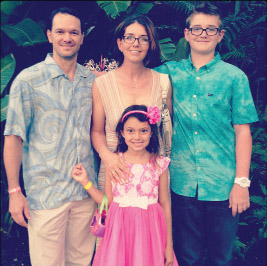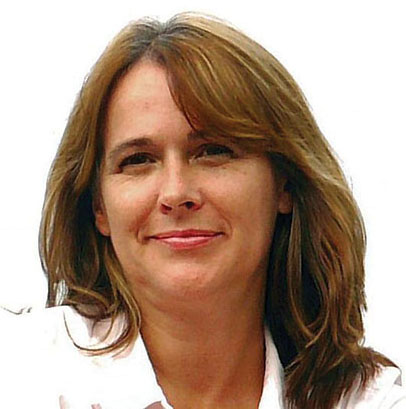
HPM: 96 years of Perseverance

By Mālielani Larish
“Mike, wake up! There’s no school today!” Roused from sleep by his neighbor’s excited shouts, Michael Fujimoto awoke gradually. As the news percolated into his consciousness, Michael thought to himself, “Wow, that’s great!” He could spend the day playing with his neighbor, who was also his classmate at Kapi‘olani Elementary School. Feeling upbeat, he rolled out of bed and walked into the parlor of his house, where he discovered his grandmother weeping and his father looking grave.

He soon learned that at 1:05am, a tsunami demolished Hilo’s downtown district and ravaged the building supply store that his father, Bobby Fujimoto, managed. On that May 22, 1960 morning, his grandmother pleaded with Bobby to give up Hawai‘i Planing Mill, better known today as HPM Building Supply.
Bobby remained resolute—he decided to rebuild.
This attitude of perseverance, along with a spirit of innovation and a commitment to adding value to the community, permeates HPM’s 96-year history. Four generations of Fujimotos have led the company, beginning with Kametaro Fujimoto, a skilled carpenter from Japan who worked on the sugar plantations. In 1921, Kametaro opened Hawai‘i Planing Mill with his business partner, Sanzo Kawasaki, to transform raw timber from the mainland into finished lumber.
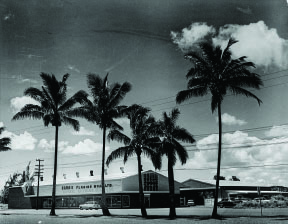
The first HPM building was located on the makai (ocean) side of Kamehameha Avenue, close to downtown Hilo. In the 1920s, Hilo was a hub where trains hauled sugar to the wharf at the terminus of present-day Waiānuenue Street. Without a breakwater wall to dissipate the energy of incoming waves, consistent surf rolled into Hilo Bay and sugar and other goods were transported out to the ships via small rowboats.
When Kametaro’s son Barney became the general manager of HPM in 1929, he introduced new merchandise to the store, including hardware items, plumbing supplies, and paint. Hilo’s breakwater was completed in that same year, solidifying the harbor as a reliable center for trade. In spite of the Great Depression of the 1930s, Hawai‘i Island celebrated the completion of the Māmalahoa Belt Road around the island in 1933, and the first radio station broadcast in Hilo in 1936.
After the bombing of Pearl Harbor and the declaration of martial law in Hawai‘i during World War II, the Navy Seabees took control of HPM’s operations. Fortunately, HPM was returned to the Fujimoto family at the end of the war. Other Japanese-American families were not as lucky. The majority of Japanese-Americans living on the continental US were forced into internment camps in addition to having their homes and businesses confiscated. Only about 1% of Hawai‘i’s Japanese-Americans were ordered into internment camps, with many of the Hilo internees assigned to Kīlauea Military Camp.
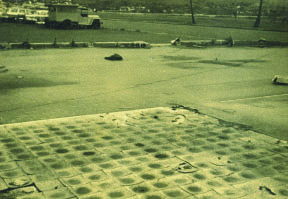
Bobby recalls that the Navy Seabees retained about 90% of the original HPM employees during the war. Bobby himself was on a troop ship destined for basic training in Alabama when he received news that the war was over. After 18 months of military training, Bobby returned home and earned a degree in Business and Economics from UH Hilo, intent on working at HPM.
In 1954, the same year that Hilo welcomed its first traffic light, Bobby became the president of HPM. The following year, he built a new store on the Hāmākua side of the present-day Hilo Iron Works building, in a community called Shinmachi, or “new town” in Japanese.
Not long after Bobby finished paying off the loan for the Shinmachi store, the 1960 tsunami crashed into Hilo with a screaming roar, emptying the store’s merchandise into the Wailoa River. The water line on the few surviving coconut trees stood at the 42 foot mark. With gratitude, Bobby remembers that the Small Business Administration offered loans to victims of the tsunami. In 1961, one of these loans enabled Bobby to build HPM’s present-day facility further inland on Kanoelehua Avenue.
During Bobby’s years as president, HPM opened a branch in Kona (1959), established a custom metal roofing department (1963), re-established a lumber department (1965), opened a wood protection plant in Keaukaha (1978), introduced packaged home plans (1982), and opened a branch in Waimea (1983).
Despite all of these successes, Bobby remains humble when he reflects on HPM’s history. “We were just lucky to be at the right place at the right time. The community has been really good to us. We try to do whatever we can to help the community.”
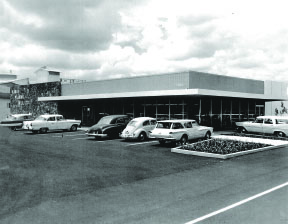
Indeed, HPM plays a generous role in the community. In the 1970s, Bobby set up the Barney S. Fujimoto Memorial Scholarship for high school seniors from Hawai‘i, Kaua‘i, and O‘ahu who plan to attend a school in the University of Hawai‘i system. He also established the Building Future Builders Scholarship, which awards money to selected students entering their second year in Hawai‘i Community College’s carpentry program. The Robert and Alice Fujimoto Foundation disburses the money for these scholarships.
HPM further serves the community through the HPM Building Supply Foundation, which donates supplies, skilled labor, and money to an extensive list of local nonprofits, including Habitat for Humanity, Junior Achievement of Hawai‘i Island, Hawai‘i Food Basket, and Hawai‘i Island United Way. Recently, HPM donated warehouse wall space and paint supplies to Estria Miyashiro of the Mele Murals project, who transformed the space with the help of 50 students from UH Hilo and Laupāhoehoe Community Public Charter School. The awe-inspiring mural, which is visible from Kalanikoa Street, features mo‘olelo ‘āina (stories of place) and mele (Hawaiian lyrics) against a stunning backdrop of Mauna Kea and lava flows. At HPM’s newly renovated Kona Branch, another Mele Mural of a pueo (owl) graces a wall fronting Luhia Street.
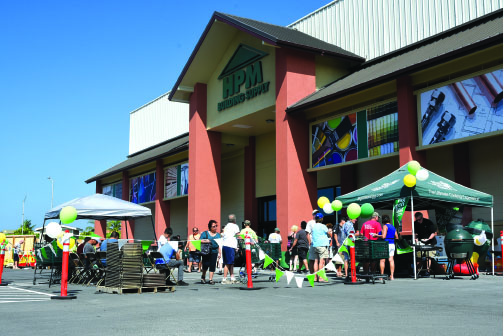
After working for the company for several years and earning an MBA, Bobby’s son Michael became president and CEO of HPM in 1992. Although the Great Recession of 2007 to 2009 impacted the company, Michael took advantage of low land prices to open a new O‘ahu branch in 2010, and later acquired Kaua‘i Lumber in Lāwa‘i in 2011. This acquisition enabled Kaua‘i Lumber to offer a broader range of products and services at lower prices, while retaining the original employees of the company. From 2011 to 2014, the company boasted double-digit growth, and opened another Kaua‘i branch in Kapa‘a in 2015.
With six branches throughout Hawai‘i and a long history in the building supply business, HPM prides itself in providing both commercial contractors and residential customers with all the products, services, and delivery systems needed to build everything from pre-packaged homes to custom mansions and large developments. HPM’s Kea‘au facility in the Shipman Business Park manufactures and exports custom metal roofing, trusses, pre-hung doors, and wall panels, distinguishing itself as one of the largest truss and wall panel manufacturers in the state.
HPM staff in the Home Planning department can walk the aspiring homeowner through the entire process of building a home, from the first phase of selecting a floor plan, requesting bids from contractors, and securing permits, to the last stage of contemplating kitchen and bath features.
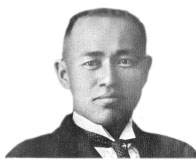
Michael believes that HPM distinguishes itself in the building supply industry by providing more “personal contact and service.”
HPM’s 310 employees statewide are uniquely motivated to strive for excellence in their work because HPM employees own 100% of the company’s stock. Bobby hatched the idea in 1959 with a profit-sharing plan, and recruited his son to develop the program further. In 1977, Michael succeeded in installing the Employee Stock Ownership Plan (ESOP), which was a novel concept for the time because the IRS had just developed the rules for these plans three years earlier. The program is a free benefit for HPM staff, who automatically become members of the ESOP after working for the company for one year.
“The goal was to provide our employees with the opportunity to develop real wealth beyond a normal profit-sharing plan, 401K, or pension plan,” Michael says. “If the company does well, the values of our shares increase, and thus the personal wealth of the employees increase.”
When HPM employees retire or terminate, they receive a cash distribution of their stock ownership. When asked about his greatest accomplishment with HPM, Bobby humbly avoids taking credit for the company’s successes. However, he does consider the implementation of the Employee Stock Ownership Plan as a highlight of his time with the company. Although ESOPs can involve a fair amount of administrative costs, they are a proven way of increasing employee motivation.
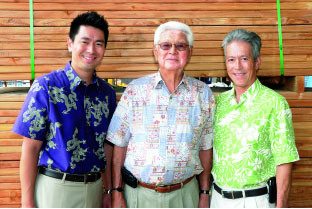
Bobby is glad that his son and grandson both work for the company, even though he never pressured them to return to the family fold. Both Michael and his son Jason surprised themselves by redirecting their lives back to HPM. After finishing an MBA from Berkeley, Michael envisioned himself pursuing a career in financial or investment services. However, his father presented him with an appealing opportunity to return to the company in order to install the ESOP and establish a wood treatment plant for HPM. After experiencing the challenges, rewards, and real impact of these two projects, Michael realized that he wanted to stay on with HPM.
Jason worked as an investment banker on Wall Street before deciding to return to HPM on a one-year contract. One year naturally turned into two because Jason enjoyed helping the employees, contributing to the community, and diving deep into problem solving for the company. Since HPM is in the middle of the Pacific and stocks a variety of hefty products, there are always logistical and supply chain issues to solve. Through Jason’s initiative, HPM has added new concrete foundation and composite roofing supplies, redesigned operations to reduce shipping costs, and recruited new hires for the executive management team. In 2016, Jason became HPM’s President and Chief Operating Officer.
On that fateful day of the 1960 tsunami, Michael Fujimoto first learned the word gambare—a Japanese expression used to encourage others to never give up, stick it out, and persevere. The Fujimotos have certainly persevered, innovated, and given back to the community during the 96 years that they have helped shape HPM’s history. And yet, three generations of Fujimotos remain humble.
When Mike Fujimoto received the Top Gun Award from the North American Retail Hardware Association in May 2015, which is the highest honor an independent home improvement retailer can receive from the industry, he emphasized that the caring, energy, and enthusiasm of all of HPM’s owner-employees enabled the company to earn the award.
“As long as we are adding value to our community and to our owner-employees, then we are doing the right thing,” Michael says. “I believe we have an organization that is equipped to persevere for years to come.” ❖
Contact writer Mālielani Larish
All photos courtesy of HPM

